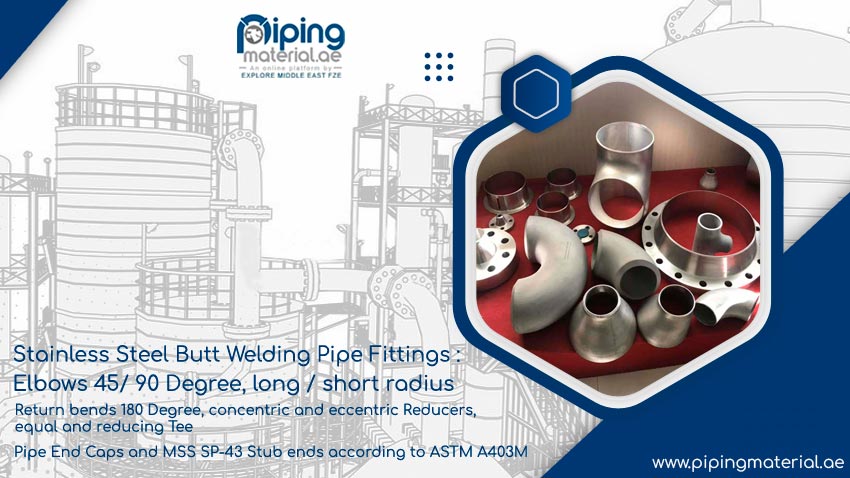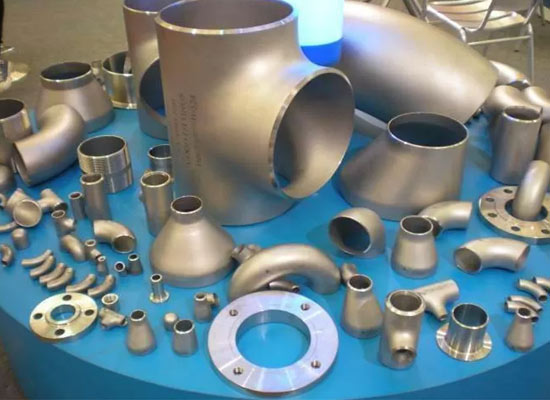
Understanding Stainless Steel Pipe Fittings
Characteristics of Stainless Steel
Stainless steel is a type of alloy composed of iron and a combination of chromium, nickel, and other elements. This unique composition imparts remarkable qualities to stainless steel, making it highly desirable for manufacturing pipe fittings:
- Corrosion Resistance: Stainless steel is renowned for its excellent resistance to corrosion and oxidation in various environments, including acidic and alkaline conditions.
- Strength and Durability: Stainless steel exhibits high tensile strength and durability, ensuring a longer lifespan and reduced maintenance costs.
- Hygienic Properties: It is a hygienic material, making it suitable for applications in industries such as food, pharmaceuticals, and healthcare.
- Heat Resistance: Stainless steel can withstand high temperatures, making it ideal for applications involving hot fluids or gases.
Types of Stainless Steel Pipe Fittings
Stainless steel pipe fittings come in a variety of types, each designed to serve specific purposes within a piping system. forged steel fittings Some common types include:
- Elbows: Elbows are used to change the direction of the piping system, typically at 45 or 90-degree angles, aiding in smooth flow and navigation.
- Tees: Tees allow for a branch connection, dividing the flow of fluids into two directions.
- Reducers: Reducers are used to connect pipes of different diameters, ensuring a smooth transition between them.
- Couplings: Couplings are used to connect two pipes of the same diameter securely.
- Caps and Plugs: Caps are used to close the end of a pipe, while plugs are used to close a fitting.
- Crosses: Cross fittings allow for a connection between four pipes at right angles.
Applications of Stainless Steel Pipe Fittings
Stainless steel pipe fittings find applications across a broad spectrum of industries, owing to their unique properties and versatility:
- Oil and Gas Industry: Stainless steel pipe fittings are vital for transporting and processing oil and gas, providing a corrosion-resistant and durable solution for demanding environments.
- Food and Beverage Industry: Stainless steel’s hygienic properties make it suitable for handling food and beverage products, ensuring the integrity and safety of the end products.
- Chemical Industry: In the chemical industry, stainless steel pipe fittings are used to transport various chemicals safely and efficiently due to their corrosion resistance.
- Pharmaceutical Industry: The pharmaceutical industry relies on stainless steel pipe fittings to maintain a sterile environment and transport critical pharmaceutical products.
- Water Treatment: Stainless steel fittings are essential in water treatment plants, providing a reliable and long-lasting solution for transporting treated water.
Benefits of Stainless Steel Pipe Fittings
Stainless steel pipe fittings offer a multitude of advantages, making them a popular choice in the industry:
- Corrosion Resistance: Stainless steel pipe fittings have outstanding resistance to corrosion, reducing maintenance and replacement costs.
- Longevity: Stainless steel fittings have a long lifespan, providing a cost-effective solution over time.
- Aesthetic Appeal: Stainless steel fittings maintain their aesthetic appeal over years of use, making them suitable for both functional and visually pleasing applications.
- Environmentally Friendly: Stainless steel is 100% recyclable, promoting sustainability and reducing the carbon footprint.
In conclusion, stainless steel pipe fittings are indispensable components in modern piping systems, known for their durability, versatility, and ability to withstand harsh environments. With various types and applications, they continue to play a critical role in a wide array of industries, ensuring efficient and reliable fluid transportation.









